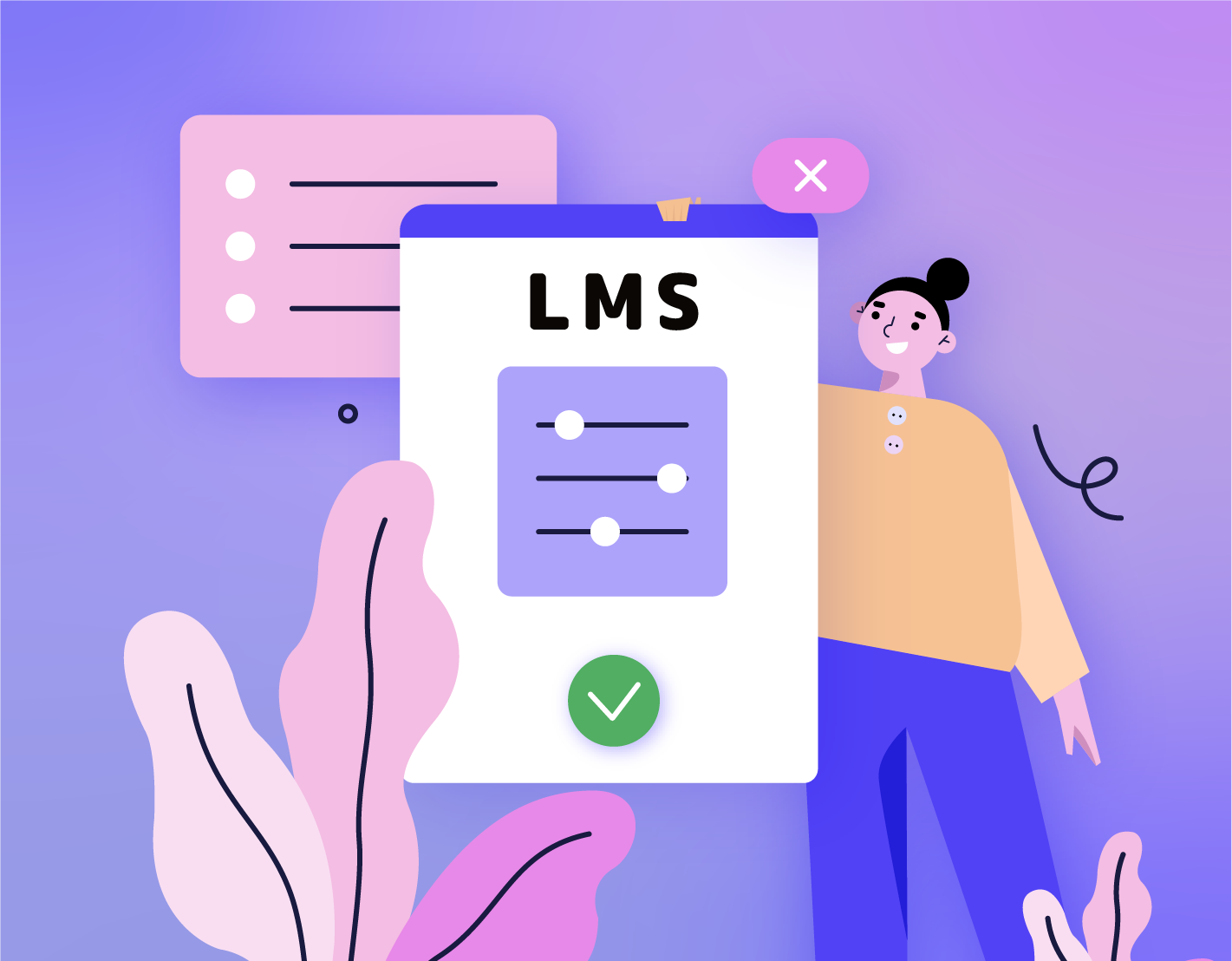The process of identifying how to implement an eLearning strategy can be daunting, but it is ultimately rewarding. Although by now, we are all on the online learning bandwagon, it takes time to learn modern techniques and master the skills one needs to make online education successful. You need an analysis of various teaching strategies and learning experiences to create an online course or training program that is effective.
Understanding how to implement eLearning requires three basic steps:
-
Planning
-
Implementation
-
Evaluation.
The Most Common Challenges of Implementation of eLearning in Education
As we gradually adapt to the online learning system, it will take time to understand various issues as they arise. New problems become more apparent as we take part in the creation, implementation, and evaluation processes. That being said, each online educator faces a unique set of challenges that can become obstacles for e-education. We have taken the liberty of mentioning some of the most common ones here.
1. While deciding how to implement eLearning, you should keep in mind the subject of your courses.
Some courses have dull content, which causes the learner to lose interest. Finding ways to make dry subjects innovative, creative, and exciting can be challenging. However, it is very easy for learners to find another course on the subject due to the vast options available. So, it is necessary to use resources to transform your course to capture the student’s interests.
2. Take in mind the Lack of Engagement of some students.
Not all students will be completely committed to online classes. Unrealistic deadlines and confusing timelines can demotivate students and cause stress. They have a hundred distractions, access to unlimited information, and short attention spans. Keeping learners engaged can become challenging, especially if your course does not have good quality content.
3. Not everyone has a grasp on how to use eLearning tools.
The tools, software, and gadgets used for eLearning in education are crucial for delivering the lecture effectively. It is important to keep in mind that not all learners have the same level of experience or tech-savviness to easily use any eLearning platform. Knowing where your learner is struggling can help you assist them, respectively. Constant feedback and assessment of your audience and their goals can help you troubleshoot any unforeseen issues.

4. Selecting the Right LMS Platform is the answer to the question of how to implement eLearning.
Grading, processing progress reports, and analyzing performance are crucial parts of any educational system. The correct LMS can automate these processes for you and give accurate and reliable data. There is more than one type of LMS; corporate, industrial, in addition to academic. The one you choose depends on your course or training curriculum. The features, marketing tools, reliability, technical support, and various offered packages should affect your decision of choosing the suitable Learning management system.
5. How to implement eLearning to a variety of Types of Learners?
This is quite a challenge for eLearning creators. The best part about online learning is perhaps that it is accessible by people of all backgrounds, ages, and experiences. This can also be a drawback as you will need to tailor your course a certain way to create an effective online learning experience for everyone. Some learners may be intimidated by the system and the technicalities of the LMS platform, causing them to convert to a simpler platform. Understanding your audience can be overwhelming, but it has to be done to cater to each learner’s unique needs.
6. Implementation of eLearning can be pricy.
eLearning requires a high upfront investment to manage new learning materials and customized systems. Limited financial resources can affect the educator’s ability to create an effective course without straining their budget. Not only should you ask yourself How to implement eLearning, but also how much does it cost to develop an online course? The costs associated with eLearning can include the cost of planning, new equipment, LMS adoption, training, and even software subscriptions or purchases.
To conclude, learning how to implement eLearning requires facing all the challenges mentioned above.
How to Implement eLearning Effectively
The system of online learning can be a hindrance to the quality of education being provided. For this reason, LMS platforms take measures to continuously improve user experience and their user-friendliness. Similarly, as an educator, you should be aware of when your traditional strategy stops being effective, and when you need to take a new approach to relay your material to learners.
To illustrate the mentioned points, we have outlined some basic tips that you should consider and follow on how to implement eLearning successfully.
1 Assess Your Audience’s Needs and Expectations.
A user’s eLearning experience is subject to their educational background, preferences, age, goals, and professional or life experiences. While implementing eLearning might be a complicated process, this can be accomplished by conducting surveys to help you in understanding your audience preferences.
Once you have enough information to create a learner persona, you can tailor your course to their specific needs so that the outcome is more productive. Not only does this answer how to structure your course in a better way, but it also helps you gain an insight into what learners expect to gain from your course. Try to identify the knowledge gap so that you can focus primarily on those aspects of your subject matter.
2. Plan the Course and Identify Goals.
A critical aspect to consider, when analyzing how to implement eLearning, is to plan carefully the structure of the course content. Stating and clarifying your goals and objectives is useful in helping you create your curriculum appropriately. eLearning platform tools and resources can help you draft a timeline or schedule to stick with. With a clear idea of what your course is targeting, you can make adjustments as you deem necessary.
Cognitive overload can cause students to lose interest, and it also reduces the quality of your content. Therefore, planning can help you set out specific, measurable, attainable, and realistic targets in regards to your syllabus. Relevancy of the subject matter not only improves the student’s retention but also ensures greater success for eLearning in education.
3. Use the Help of a Team of Professionals.
While the question of how to implement eLearning properly requires an understanding of what platform to use, you should consult online platform providers. Some of the most central team members you will need are project managers, eLearning specialists, and IT experts. Project managers will overlook the day-to-day planning and troubleshooting of any issues that come along. eLearning specialists can help you transition into this new medium as they are skilled in creating and using online learning programs. IT experts are crucial to handle the technical difficulties that come with using. People who are familiar with the eLearning initiatives and have experience in online course development will be an asset for you.

4. Use LMS Platforms to Make Content Engaging.
As previously mentioned, creating engaging content is challenging and time-consuming. However, there are many tools and options available now that make this process simpler and easier. According to your requirements, you can select an eLearning platform or LMS that suits your specific needs.
Many educators know how to implement eLearning strategies that create an immersive online learning experience. If you are new to this, many platforms guide you through each step of the process, using social learning tools or different features. Your first step should be to identify what your content needs to be more engaging and what your teaching format is. Presentations, videos, live lectures, tests, learning games can all be designed to fit your course.
Dynamic and animated content usually captures the learner’s interest effectively. An instructional designer can help you with this. LMS platforms offer features and social learning tools to create an exciting online learning environment. All these features center around three aspects: microlearning, gamification, and developing hype. Gamification is extremely effective in helping students retain details and actively participate in class.
5. Communication Between Course Instructor and Students is vital.
Miscommunication between the lecturer and student creates a lack of interest and de-motivation. You can interact with your audience through various communication tools offered by LMS platforms. This extends to post-lecture communication as well, so that learners can approach you in case of any queries or concerns.
Communication is very critical in resolving issues or conflicts that are very common with any eLearning platform. It can help you monitor your student’s performance and responsiveness to the course content. They can relay to you whether they are following the subject matter and if the outline is well-paced. You can then alter your time-frame or topics and make revisions accordingly.
Maintaining interaction through student forums, communication tools, or social media is a core concept of successful eLearning in education. It contributes to your online presence and teaching style.
Conclusion
It takes time to learn the tips and tricks on how to implement an eLearning strategy. As you learn more about designing, managing, developing, and evaluating the performance of your course, you will get more results. The right LMS platform can be used to support your objectives and vision for your online education. Many e-learning and development programs are available to help align your teaching style with your goals and your audience’s goals.
Keeping the above-mentioned components in mind will help you to build a strong foundation and avoid bigger problems in the future. Altering and adjusting your eLearning strategies through regular feedback and consultation can help you get a strong idea of how to implement eLearning effectively.
If you are looking for a customized online learning solution and want to learn more about different interfaces, tools and tips and tricks, contact us for a demo.
-
The Most Common Challenges of Implementation of eLearning in Education
- 1. While deciding how to implement eLearning, you should keep in mind the subject of your courses.
- 2. Take in mind the Lack of Engagement of some students.
- 3. Not everyone has a grasp on how to use eLearning tools.
- 4. Selecting the Right LMS Platform is the answer to the question of how to implement eLearning.
- 5. How to implement eLearning to a variety of Types of Learners?
- 6. Implementation of eLearning can be pricy.
- How to Implement eLearning Effectively
- Conclusion



